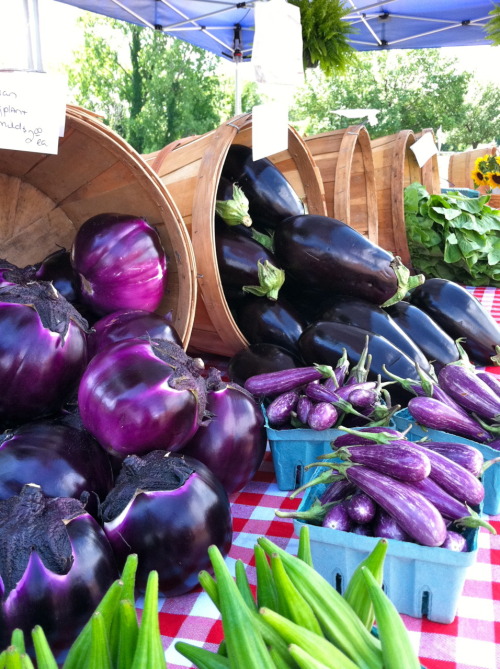While this number is alarming, there are people who are trying to do something about it. This past weekend, while visiting a friend in Boston, I had a chance to meet someone who is working to provide food to those who need it: Nancy Jamison, the executive director of
Fair Foods, a non-profit organization based in Dorchester that collects surplus food and distributes it to nearly 10,000 families in the eastern Massachusetts area. On Saturday I spoke with Jamison about Fair Foods and the organization’s trademark program, “Two Dollars-a-Bag.”

“Two Dollars-a-Bag” provides families with 15 pounds of groceries for a donation of $2. Operated by about 200 volunteers, the program trucks food to more than 50 distribution sites, located in churches, schools and senior housing complexes. Though donations are voluntary, Jamison finds that most people choose to contribute the money. “We do this program to give people their dignity,” she says, “People don’t like a handout.”
Rarely does Jamison sit down. With her matted grey hair, wool sweater and overalls, she looks much older than her 56 years; but she has an inexhaustible supply of energy. “Her day starts between four and five in the morning, and she usually doesn’t leave until around nine,” says Larry Lawson. Lawson is lanky with dreads that rain down his back. He is the main manger of Fair Foods, and Jamison calls him her “right-hand man.” He joined Fair Foods 15 years ago, having heard of the organization through its “Two Dollars-a-Bag” program.
While Jamison barks orders at a group of Harvard kids who are volunteering that day, Lawson stands quietly by a waiting truck at the opening of the warehouse. You’d easily mistake the warehouse for a junkyard if it weren’t for the stacks of food organized in the center of the room. Panes of glass and scrap wood overflow from every corner, and a broken-down car lingers to the side of the asparagus.
Jamison first became concerned about hunger relief during the 1984 famine in Darfur, western Sudan. “You had all these people, like Bob Dylan and Michael Jackson, singing ‘We are the World’, but what we needed wasn’t a song; we needed a food program.” But at that time, she was stuck raising her sister’s seven kids because of her sister’s drug addiction.
In 1988, she was working for Habitat for Humanity at Dorchester’s Pilgrim Church. Driving home one day, she saw surplus food being dumped at a Stop & Shop distribution center. She got a truck and brought the food back to the church. Jamison then recruited some friends, got more trucks, and soon they were delivering 45,000 pounds of food a week to local food banks.
Today, Fair Foods delivers 150,000 pounds of food a week, though Jamison says this number is far from adequate. “Nearly 300,000 pounds of food still gets dumped weekly,” she says, “as Fair Foods grows I want to address that problem.”
Lately, Jamison has been finding it difficult to continue delivering 150,000 pounds of food a week. Fair Foods’ current warehouse is smaller and holds less food than their previous location, which had two stories and was also located in Dorchester. They were forced to relocate because of issues with their landlord. “Our last landlord was racist,” Jamison says, “He’d start fights with all the black guys who worked for me. Once he even stuffed a can down our drain pipe!”
Even at their new location, they are having trouble with their landlord: “We were busy painting the ugly walls of this place and [the landlord] comes in here with these two dogs peeing everywhere, and starts yelling at us for painting.” Jamison is now looking to buy a larger warehouse in Chelsea, Mass., and hopes to move there by the spring.
Funding for the move has come mostly from money that Jamison says she made through real estate deals a couple years back. She has also received over $200,000 in grants, but says she dislikes taking them because she feels that she is endorsing what she’s termed the “non-profit industrial complex.”
As Jamison discuses the
Greater Boston Food Bank, a similar organization that distributes food to hunger relief agencies in the city, she digs her hands into her pockets and sways backwards with a critical look in her eye. “They pay their executives $200,000 a year to just go to meetings; they need to get their asses in gear.” Jamison says she makes $40 a week through Fair Foods. “I give myself the same amount that I give the people working for me because one of my goals is to integrate the haves and the have-nots.”

Jamison’s employees are a mixed bunch. She has about 300 people working for her, with five managers. Some come from jails or half-way houses, others are from nursing homes. Most are people volunteering or fulfilling a community service requirement; Jamison has few steady workers. Part of her full-time staff is Jason Bennett, a carpenter and recent alumnus of Boston University. Jamison often puts him in charge when she is picking up or distributing food. Jason is quietly self-assured, giving orders to the Harvard kids, who show up late for volunteering, in an easy going, non-confrontational manner.
When Jamison arrives later with Lawson, the Harvard kids, taking a break from bagging squash, have formed a circle and are singing a cappella. Jamison sets them to work immediately, saying later that she took an immediate dislike to them. “The Harvard attitude messes a kid up, it makes them feel entitled.”
Of Jamison’s employees, Lawson is among those who have been with Fair Foods the longest. He also seems to be the most understanding of Jamison’s mischievous sense of humor. She does not hesitate to interrupt him when he is quietly chatting with a man who has stopped by to pick up some food, bursting into his office and chiding him for eating pig skins -- an acquired taste.
Whether Fair Foods will continue in Jamison’s absence remains to be seen. “Fair Foods is not a normal non-profit organization, it’s more like a family," my friend who volunteers there says, "and one of its biggest flaws is that so much of it relies on Nancy’s energy; I’m not sure who’s going to run it when she retires."
With the last truck pulling away, the Harvard kids gone, and her employees making their way home, Jamison slumps in a chair in her office. Lawson leans against the desk beside her. They talk about the Harvard kids, and how useless they were; they voice their shared frustrations with the current warehouse. Then Jamison tosses her glasses on the desk and Lawson absentmindedly picks them up, turning them over in his hands.
“You coming around for dinner tonight, Larry?” she asks. “You’ve been eating at my house all week; you keep coming around and your wife is going to divorce you.”
He laughs: a loud, unrestrained burst of sound that echoes. “Yeah, I guess I’ll stop by.”
















